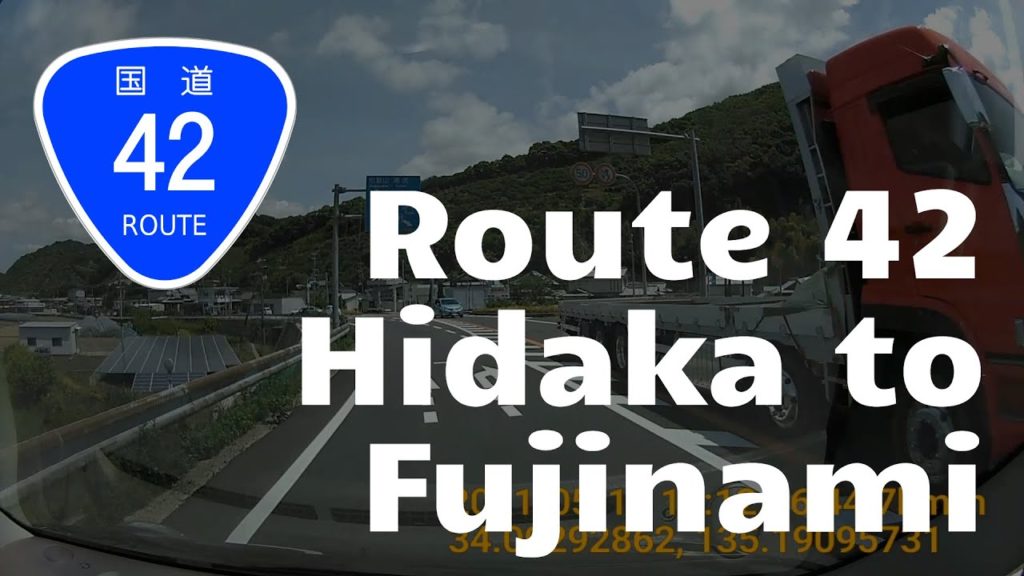This video shows you what it’s like to drive on the National Route 42, or Kokudo 42-go, departing from Hidaka Town, going through Yura, Hirogawa and Yuasa Towns, and arriving in Aridagawa Town.
The following are the highlights of the video.
2:21 Kokokuji (temple – birthplace of miso)
Kokokuji is known as the birthplace of Komuso monks. Komuso’s are the monks of Zen Buddhism who travel and play the shakuhachi flute. They also wear a deep straw hat, which signifies abandonment of ego and allows them to travel anonymously.
The Komuso culture began after Shinchi Kakushin returned from his study in Hangzhou, China, and became the first head priest of the temple in 1258. He brought with him four Chinese monks who played the bamboo flute, each of whom gained several disciples in Japan.
Kokokuji is also known as the birthplace of Kinzanji Miso, a type of miso paste. This is significant because Kinzanji Miso is known as the predecessor of Japanese soy sauce as we know it today. The sauce was discovered in the form of the liquid that accumulated in the process of making the miso paste.
3:26 Mizukoshi Pass (mountain road)
Mizukoshi Pass is a mountain road with its peak at an altitude of 180m, and it spans about 7km in Yura and Hirogawa towns. Along this pass, there are some places selling oranges. According to what I read, mountain regions are suitable for growing oranges because of the slopes. This is thanks to the optimal sunlight and water amounts.
Firstly, the amount of sunlight will be abundant for obvious reasons. And secondly, the amount of water in the ground doesn’t get unnecessarily high. If you have too much water around the orange trees, the fruits will taste watery instead of sweet. So it’s better if the ground is a slope where the water kind of passes by quickly.
4:11 Hisakouen (orange vender)
Shortly before the summit of the pass, there’s an orange vender called Hisakouen. They have nationwide loyal fans online, and operate from this remote mountain pass.
I bought a bag of four Hassaku oranges which tasted amazing It only cost me a mere 100 yen which is less than a dollar, and this is outrageously cheap in a Japanese standard. In fact, in the same shop the bags containing the same number of the same kind of oranges will cost 5 times as much just because they look better and are more presentable. My oranges were cheaper simply because they didn’t look that good.
I’ve heard so many stories about how fruits and veggies aren’t commercially valuable unless they look great. So I think what I saw in this shop is an honest and responsible kind of approach to agriculture commerce, because they aren’t wasting any products.
6:40 Kei Market (yakitori chicken)
Kei Market is a super-good yakitori place called accessible from Nashima Junction in Hirogawa. They offer charcoal grilled chicken as cheaply as 100 yen per skewer, and
it’s easy to locate them as they’re right at the 6-way junction called Showa in the center of town.
7:17 Yuasa Syouyu (world-famous soy sauce maker)
Yuasa Syouyu is an ultra-famous soy sauce house in Yuasa. One of their products has been winning the Grand Gold at the Belgian food award Monde Selection every year since 2006, while another product also won the same prize for 8 consecutive years until 2014.
Amazingly, they are so open to the customers and the community surrounding them. Visitors can freely walk through their brewery, and with a casual appointment listen to a staff explain the process of traditional soy sauce production as well as its brief history.
There’s a shop near the exit of the brewery, where you can buy some of those world-renowned soy sauces. I got myself a small bottle of Kuyou Murasaki which is in the original form of soy sauce in Japan, described as Tamari Syouyu. This is the one that won the Monde Selection every year for 8 years, by the way.
[Background info on Route 42]
Route 42 is one of the 459 national highways in Japan and runs between Kosai City, Shizuoka Prefecture and Wakayama City, Wakayama Prefecture. The entire stretch of the route is about 500km. In Japan, “highways” including Route 42 are different from “expressways” which have higher speed limits. In Wakayama Prefecture, Route 42 was practically the only path for drivers going between major cities for a long time. However, since the construction of Hanwa Expressway in the mid 1990s, it has been a matter of choice whether to take Route 42 or the Expressway. Route 42 is toll-free but it goes up and down the mountains, and the Expressway is straight and fast but it costs.
[Links to the videos mentioned]
Video about Shirasaki Coast
[Research]


AloJapan.com